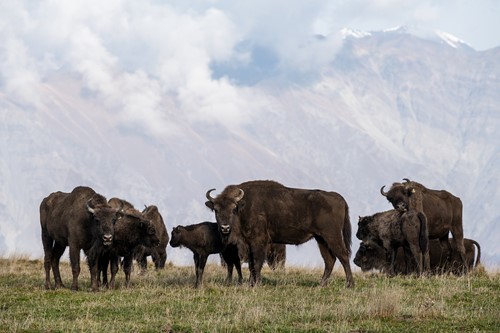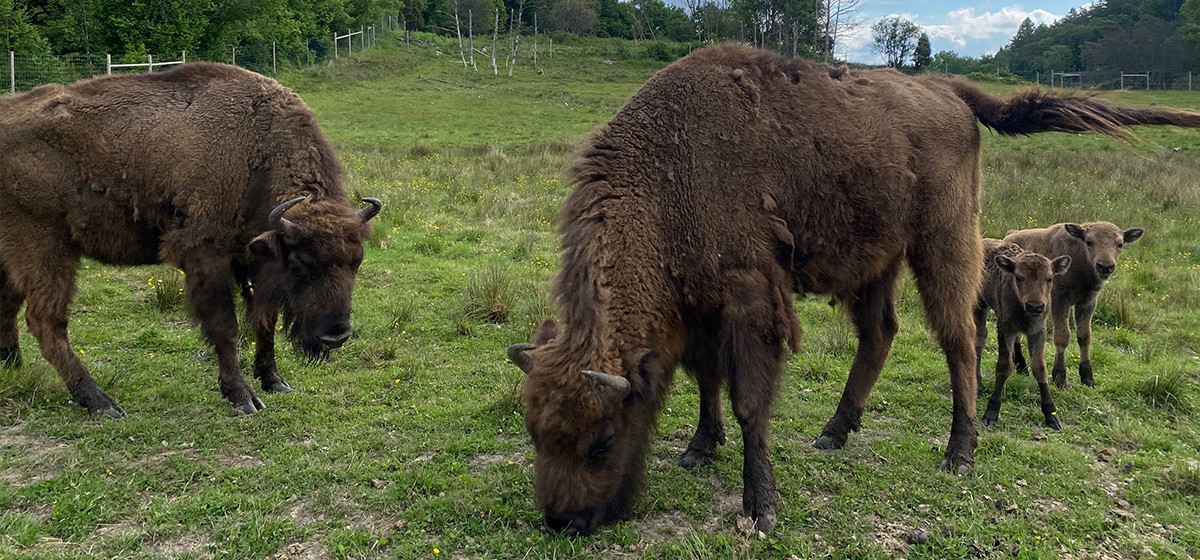European bison conservation
Long time ago, the European bison was widely spread across Europe. The earliest evidence comes from 23,000–35,000 old cave paintings in Romania. They lived in herds in deciduous and coniferous forests, open meadows and forest glades. In modern times have loss of habitat, fragmentation of the landscape and heavy hunting pressure caused a drastic decline in the species. The last wild bison was shot in the Caucasus in 1927 and with it the species was wiped out from its natural environment. There were fewer than 60 bison left in zoos and private facilities.
After the First World War, an international breeding effort was started to save the species, and from the 1950s work began to reintroduce the European bison into the wild. Thanks to these efforts, and almost 100 years after the species became extinct in the wild, the European bison today exists in over 40 free-ranging groups consisting of more than 7,000 wild animals. All European bison alive today are descended from a dozen animals in captivity. The wild populations are found mainly in Poland, Belarus, Russia and Ukraine.
In 2019, a new bison release project was started in Azerbaijan by WWF Germany. The long-term goal is to secure the future of the species in Shahdag National Park in Azerbaijan by releasing 100 individuals in the next few years. To ensure that the bison adapt to their new home, they are monitored through GPS collars, radio transmitters and camera traps.

Released bison in Azerbaijan. Photo: Emil Khalilov
The 130,000-hectare Shahdag National Park is not only the largest national park in Azerbaijan, but also in the entire Caucasus. There is enough surface and forest to build up a viable population of European bison. As the population grows, the species also have the opportunity to naturally spread to Georgia and the North Caucasus. Shahdag National Park consists of several different ecosystems, mainly mountain forests and alpine meadows.
In addition to reintroducing the bison in Azerbaijan, the project also works to train staff in the national park, counter poaching and spread information about the species and its important functions in nature to the local population and the public.
What we do at Nordens Ark
Since 2018 we keep a group of European bison in the park, consisting of a bull and a number of cows. They are an important part of the rescue population located in zoos over the world and contribute to the survival of the species. In early autumn 2021, Nordens Ark's first European bison calf was born, and the following year four more calves arrived. The calves either stay within the rescue population or are sent for release.
News from the project - March 2024
In 2023, we sent our first two bison to the stocking project in Azerbaijan. During the summer of 2023, they were first transported to the Berlin Zoo to join the other individuals for release. In the fall, they are transported together to Azerbaijan to be released in the Shahdag National Park in the South Caucasus. A total of 10 bison have been sent to Azerbaijan for release in 2023. These came from seven different zoos in five different countries (Sweden, Germany, Romania, the Czech Republic and France).

Visenter i väntan på utsläpp i Azerbadjzan 2023. Foto: Emil Khalilov
In collaboration with
EAZA, WWF and local partners in Azerbajdzjan












